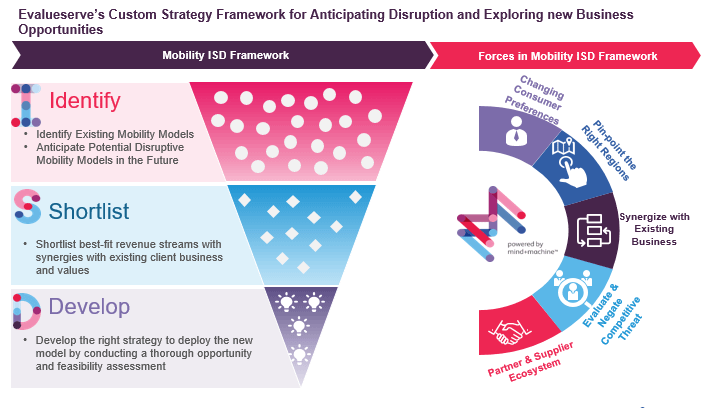The Challenge
Over the last decade, the automotive industry has been witnessing a transformation in technology and environmental standards that has impacted across all expanses in the industry. Apart from the adoption of electric and alternate fuel-based drivetrain, the evolution of autonomous technology, and the increase in connected features, automotive companies find themselves facing unfamiliar challenges. The stricter environmental norms paired with the slowdown in global sales due to changing consumer preferences are forcing industry players to find new ways of growing and evolving.
Our client, a premium passenger and commercial automotive manufacturer was looking to stay ahead of the curve by pre-empting the disruptive trend of vehicle sharing and co-ownership. The client had been preparing for this change long ago, as they were one of the first OEMs to start a car sharing service. However, after operating in a limited region the client was vying to scale-up the model.
Among a host of challenges that the client needed help, a few are included below:
- Identifying several active vehicle sharing and co-ownership platforms across major geographies.
- Ascertaining KPIs that will influence decisions towards co-ownership, and evaluate a long list of cities accordingly.
- Scouting possible partners and suppliers who could collaborate with the client across several areas.
Our Solution
Step 1: Identify and Anticipate Existing and Disruptive Mobility Models
Identifying existing and newly established business models on mobility and future mobility was the first step. We carried-out desk research using free, paid and subscription-based published sources for the base information. This was supplemented by in-depth discussions with existing and ex-employees of startups, new entrants and other companies focusing on monetizing mobility-based business models.
Step 2: Strategic Deliberations to Shortlist Mobility Models
Once the preliminary investigations in the first step were completed, we brainstormed with the client on several on-site discussions to pick out 3-4 “future mobility business models”. We kept in mind the client’s existing mobility services when shortlisting prospective mobility models. Over the next 4-6 months, the relevant client teams deliberated and selected a mobility service model that would allow them to scale-up their existing car-sharing and ride-sharing platform.
Step 3: Detail Opportunity Assessment
- Consumer Behavior & Preferences: We conducted a combination of desk research on published articles, automotive journals and trend analysis. This research uncovered consumer trends and sentiments on vehicle ownership, mobility requirement and other parameters.
- Feasibility Assessment & Sizing-up the Scale of Business: Several metrics indicative of the population such as the average daily commute, preferred modes of commute, expenditure on commute, average price of taxi-metro-rail, and congestion levels were identified in over 250 cities across the globe. The client could understand the relevancy, the required scale and the potential of mobility services in several regions.
- Competitive Analysis: We took an in-depth look at any possible similar offerings from other OEMs and startups in order to understand their strengths, shortfalls and positioning. Through this exercise, we proposed key differentiating factors and possible USPs to the client.
Step 4: Partner & Supplier Shortlisting
The last phase of the project focused on identifying possible partners for scaling-up operations in several regions. Through a blend of desk research and telephonic discussions, we were able to generate a list of potential partners that met the client’s criteria and synergies. The potential partner list combined companies from various part of the automotive value chain that included component suppliers, app-based platform suppliers, in-vehicle service providers, maintenance providers and more.
Business Impact
Largest OEM offered car-sharing service in the world: by building on the various information’s mentioned above, the client scaled-up their car sharing service, which is now among the largest services of its kind across the globe.
Enhanced Partner Development Ecosystem: the results provided the client with a detailed view of a variety of mobility-based models and offerings. Further analysis also uncovered major participants, suppliers, and possible partners for future ventures across current and new geographies.
Largest car-sharing service in the world
The client was able to scale-up their car sharing service, and estabish itself as one of the largest of its kind.
Enhanced Partner Development Ecosystem
The client used insights to uncover possible partners for future ventures across current and new geographies.
Talk to One of Our Experts
Get in touch today to find out about how Evalueserve can help you improve your processes, making you better, faster and more efficient.
